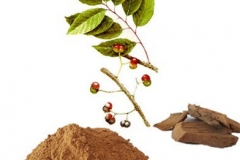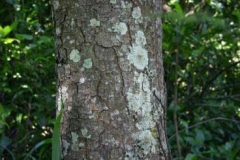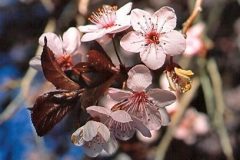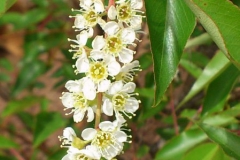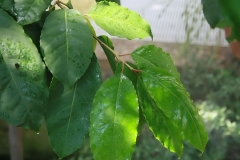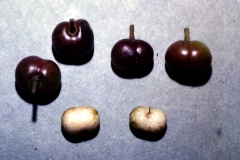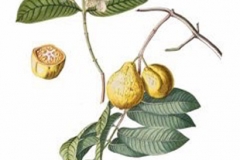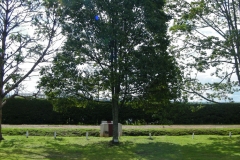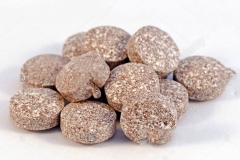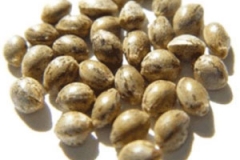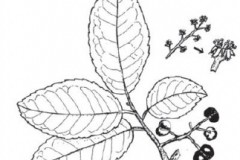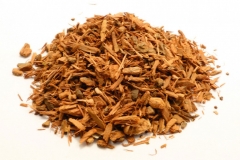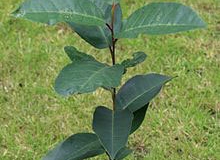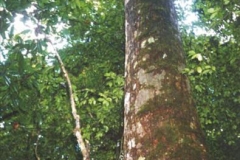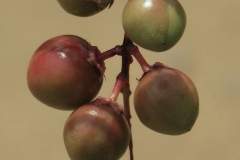The plant is called stinkwood because it has wood with an unpleasant odor. The genus name ‘Prunus’ is derived from the Latin word which refers to the plum family and the scientific name “Prunus africana” refers to the species of African origin. The Prunus genus is very important in agriculture as it includes peaches, plums, cherries and apricots. Native to southern and central Africa, this is a plum tree, but the fruit is not the focal point of interest. While this bark-derived substance has been in use for hundreds of years, it is still mainly used for the treatment of prostate issues in men. This supplement is commonly used to block the activity of DHT, more formally known as dihydrotestosterone. This supplement is able to prevent problems with the prostate and male pattern baldness. You can use pygeum in the recommended amounts on a permanent basis. For those who are worried about their prostate health, this is an excellent way to strengthen your body’s defenses.
Plant Description
Pygeum is a fast-growing, much branched, evergreen tree that grows about 10 – 24 meters tall with some specimens reaching 36 meters. Bole has a diameter of up to 1 meter and can be branchless for the first 10 meter. The plant is found growing in upland rain-forest, montane, riverine forests, moist evergreen forest, woodland, edge of dry gallery forest and mixed Podocarpus latifolius forest. Bark is usually black to brown, rough, corrugated or fissured, and scaly, fissuring in a characteristic rectangular pattern. The wood is heavy, hard, strong and red brown colored. Large-diameter trees have impressive, spreading crowns. It requires a moist climate, 900–3,400 mm (35–130 in) annual rainfall, and is moderately frost-tolerant. P. africana appears to be a light-demanding, secondary-forest species.
Leaves
The heavy shining foliage is composed of simple leaves, arranged alternately, oval or lance-shaped, sometimes widely so, tapering at both ends and sometimes with a long drawn-out point or with a rounded apex and base. They are 8–20 cm (3.1–7.9 in) long, shiny deep green above, duller and lighter below, with conspicuous veins and a distinct midrib which is prominent below. The margins may be toothed or untoothed. The 2 cm (0.8 in) petiole is pink or red and smell like bitter almonds when crushed.
Flower
Flowers small, androgynous, white or greenish, hairy, fragrant, borne abundantly in bunches 5-7.6 cm long in the axils of leaves or on the side of shoots; solitary or in branched axillary sprays 3-7 cm long; calyx and petals small; 10-20 stamens. In Kenya the trees flower between November and February and ripe fruits are available 4-6 months later. In South Africa flowering occurs October to May and fruiting September to January.
Fruits
Fertile flowers are followed by spherical, bitter drupe, 7 mm long, 1.3 cm broad, pinkish-brown, bilobed, with a thin, dark red to reddish-brown pulp when ripe, a depression in the center covering a papery shell; thin pericarp with 1 or 2 small, delicate, oval seeds inside. It grows in bunches ripening September through November, several months after pollination.
Health Benefits of Pygeum
The benefits of using Pygeum bark extract include treating benign prostatic hyperplasia (BPH), boosting fertility, preventing urinary tract infections (UTI), and reducing inflammation, among others.
1. Hair Loss
As a DHT blocker, pygeum bark extract is very important for men who are struggling with hair loss. Male pattern baldness is often exacerbated by the presence of dihydrotestosterone, but this supplement can block that compound from having any effect. While research is still in early stages of the comprehensive effects of this supplement, subjective evidence is quite considerable. (1)
2. Male Fertility Issues
If you are struggling to remain fertile, or if your sperm count or motility has decreased, using this supplement may be able to increase hormone production and avoid the inflammation that can affect fertility. (2)
3. Inflammation
Chronic inflammation is one of the biggest causes of chronic diseases, such as rheumatoid arthritis and cancer. This supplement can help to reduce inflammation to improve the function of multiple organ systems. (3)
4. Prostatic Hyperplasia
One of the most common uses of this bark extract, benign prostatic hyperplasia (BPH) can be treated with this supplementation. BPH is a condition that affects many men and is more commonly referred to as an enlarged prostate. Considering that this is often seen as a precursor to prostate cancer, it is important to identify and remedy this problem as soon as possible.(4)
5. Urinary Tract Infections (UTI)
Some studies have found a link between a decrease in urinary tract infections and the consumption of this supplement, both as a preventative measure and a treatment.
6. Kidney Disease
Different research has found that this supplement can ease the strain on the kidneys and improve the detoxification of the body, which can boost immune health and overall wellness.
7. Sexual Performance
By increasing circulation and reducing inflammation, regular use of this bark extract has also been linked to improved sexual performance and endurance in men.
8. Other Benefits
Frequent use of pygeum also helps in treating and preventing other health conditions such as fever, malaria, and stomach-ache.
Recorded traditional uses of Pygeum
| Pygeum Quick Facts | |
|---|---|
| Name: | Pygeum |
| Scientific Name: | Prunus africana |
| Origin | African forest regions, Central and South American mountains, the Gulf of Guinea, and the Madagascar and Comoros islands |
| Colors | Green when young turning to dark red or reddish-brown at maturity |
| Shapes | Rounded, drupe, red to brown, 7–13 mm (0.3–0.5 in), wider than long, two-lobed, with a seed in each lobe |
| Taste | Bitter |
| Health benefits | Hair Loss, Male Fertility Issues, Inflammation, Prostatic Hyperplasia, Urinary Tract Infections (UTI), Kidney Disease and Sexual Performance |
| Country | Plant Parts Used | Use |
|
Cameroon |
Branches | Tool (Axe, hoe) handles |
|
Timber |
Ceremonial spear handles | |
| Roof Support | ||
| Bridge decks | ||
| Fuel wood | ||
| Window and door frames | ||
| Bark | Traditional medicines (45 human ailments) | |
| Leaves | Traditional medicine | |
| Fruit and leaves | Wildlife food | |
| Seeds | Traditional medicine (Rare Use) | |
| Flowers | Honey Production | |
|
Uganda |
Timber |
Mortars and pestles |
| Beehive supports | ||
| Beer boats | ||
| Pitsawn lumber | ||
| Building poles | ||
| Bean stakes | ||
| Firewood, Charcoal | ||
| Furniture, flooring, paneling | ||
| Carving | ||
| Building poles and posts | ||
| Utensils | ||
|
Kenya |
Timber bark |
House building and furniture |
| Traditional medicine (fever) | ||
| Traditional medicine (gonorrhea) | ||
| Traditional medicine (Purgative) | ||
| Leaves | Traditional medicine (Stomach pain) | |
| Bark | Traditional medicine (purgative) | |
|
South Africa |
Bark |
Traditional medicine (Chest Pain) |
| Traditional medicine (inter coastal pain) | ||
| Timber | Wagons | |
| East Africa | Leaves | Traditional medicine (stomach pain) |
|
West Africa |
Timber |
Truck bodies |
| Chopping blocks | ||
| Bridge decks | ||
| Cabinets and furniture | ||
| Zaire/ Burundi | Leaves | Traditional medicines (Insanity) |
|
Unspecified |
Unspecified |
Traditional Medicine (cattle purgative, fever, stomach pain) |
| Arrow Poison | ||
| Anti-inflammatory, kidney disease, urinary tract complaints, fevers, malaria, wound dressing, appetite stimulant |
Traditional uses and benefits of Pygeum
- In small quantities, hydrogen cyanide has been shown to encourage respiration and improve digestion, it is also claimed to be of benefit in the treatment of cancer.
- It is considered traditional remedy for diseases such as fever, malaria, wounds, stomach ache, kidney diseases, and, gonorrhea, and as appetite booster.
- Bark is highly valued for its medicinal properties, mostly as a treatment for benign prostatic hyperplasia and prostate gland hypertrophy, diseases that commonly affect older men in Europe and N. America.
- Bark is used in traditional medicine as a purgative and as a remedy for stomach ache.
- Leaves are used as an inhalant for fever or are drunk as an infusion to improve appetite.
- Powdered pygeum bark is used by African natives to treat urinary problems.
- Bark is used in an attempt to treat fevers, malaria, wound dressing, arrow poison, stomach pain, purgative, kidney disease, appetite stimulant, gonorrhea, and insanity.
- Bark has a very high reputation as a treatment for enlarged prostate in older males.
- Bark is also required as an aphrodisiac to enhance vitality and sexual power especially among the males.
- Leaves are used as an inhalant for fever or are drunk as an infusion to improve appetite.
- Water is added to pounded bark, and the red liquid is used for treatment of stomachache.
- An infusion of powdered bark in milk or water is a tribal remedy for the treatment of bladder pain and micturition problems.
Pygeum Dosage
Although the amount of research on a precise dosage is somewhat limited, most specialists agree that between 50 and 100 mg of pygeum extract can be consumed each day for the treatment of prostate issues. Given the powerful nature of this supplement, do not consume more than the recommended dose.
How to Consume Pygeum
Pygeum uses, both traditional and modern, are mostly limited to herbal remedies made from the bark. Aside from the berries of the pygeum tree being eaten by gorillas and some birds, there are almost no culinary applications for pygeum.
Natural Forms
Infusion
Dried pygeum bark can be stepped in hot water for few minutes. This preparation can be taken on daily basis for treating urinary problems and promoting prostate health.
Decoction
Concentrated preparation is obtained by boiling the pygeum bark with water. This liquid can be taken every day to reap the anti-inflammatory benefits of the herb.
Herbal Remedies & Supplements
Liquid extract
This strong preparation concentrates all the medicinal benefits of pygeum. Few drops are diluted in a glass of water for a potent anti-inflammatory effect.
Capsules
In this supplemental form, pygeum can be taken every day, in standardized doses, for a more controlled anti-inflammatory action and urinary tract health support.
Other facts
- Bark, bruised leaves and fruits smell strongly of bitter almonds, suggesting the presence of hydrogen cyanide.
- Wood is used for furniture, carving, chopping blocks, floors, wagons, utensils, etc.
- Timber is a hardwood used in the manufacture of axe and hoe handles, utensils, wagons, floors, chopping blocks, carving, bridge decks, floors, wagons and furniture.
- Wood is tough, heavy, straight-grained, and pink, with a pungent bitter-almond smell when first cut, turning mahogony and odorless later.
- Tree is used for erosion control, shade, shelter, and windbreak and as an ornamental.
- Fallen leaves act as a green manure.
- Flowers make good bee forage and the attractive shape makes it a popular garden shade tree.
- In the Afro-montane forests the fruits of P. africana are an important food source for a number of rare birds and mammals.
- Bark extract may be used as a purgative for cattle.
- Pygeum produces high-quality firewood.
- Flowers have sufficient nectar and pollen for good bee forage.
- Avoid over harvesting of bark from the tree as it leads to death and mortality.
- Do not harvest trees in dry season in lower altitude as it increases susceptibility to pest and disease attack.
Precautions
- Bark, bruised leaves and fruits smell strongly of bitter almonds, suggesting the presence of hydrogen cyanide.
- They are reputed to be poisonous and are used in witchcraft.
- In excess, however, it can cause respiratory failure and even death.
- Avoid use during Pregnancy and breast feeding.
- It may cause nausea and abdominal pain.
- In larger concentrations, however, cyanide can cause gasping, weakness, excitement, pupil dilation, spasms, convulsions, coma and respiratory failure leading to death.
References:
https://www.itis.gov/servlet/SingleRpt/SingleRpt?search_topic=TSN&search_value=837327#null
https://davesgarden.com/guides/pf/go/176815/
https://pfaf.org/user/Plant.aspx?LatinName=Prunus+africana
https://www.drugs.com/npp/pygeum.html
https://en.wikipedia.org/wiki/Prunus_africana
http://www.theplantlist.org/tpl/record/tro-27802197
https://species.wikimedia.org/wiki/Prunus_africana
http://pza.sanbi.org/prunus-africana



